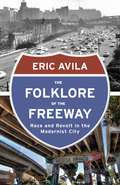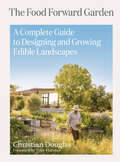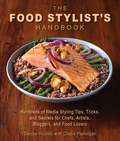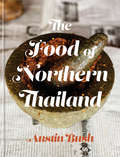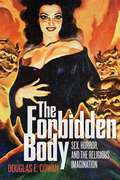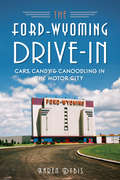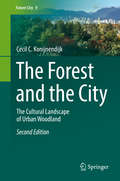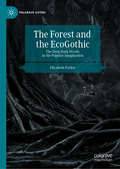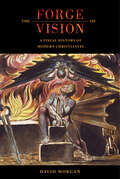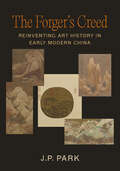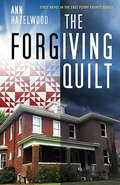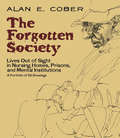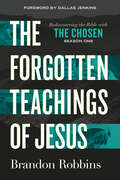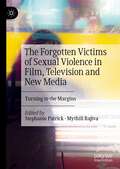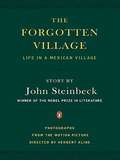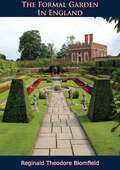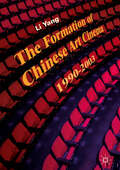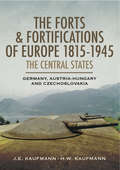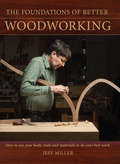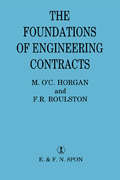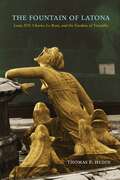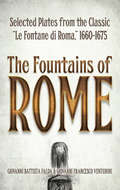- Table View
- List View
The Folklore of the Freeway: Race and Revolt in the Modernist City (A Quadrant Book)
by Eric AvilaWhen the interstate highway program connected America&’s cities, it also divided them, cutting through and destroying countless communities. Affluent and predominantly white residents fought back in a much heralded &“freeway revolt,&” saving such historic neighborhoods as Greenwich Village and New Orleans&’s French Quarter. This book tells of the other revolt, a movement of creative opposition, commemoration, and preservation staged on behalf of the mostly minority urban neighborhoods that lacked the political and economic power to resist the onslaught of highway construction.Within the context of the larger historical forces of the 1960s and 1970s, Eric Avila maps the creative strategies devised by urban communities to document and protest the damage that highways wrought. The works of Chicanas and other women of color—from the commemorative poetry of Patricia Preciado Martin and Lorna Dee Cervantes to the fiction of Helena Maria Viramontes to the underpass murals of Judy Baca—expose highway construction as not only a racist but also a sexist enterprise. In colorful paintings, East Los Angeles artists such as David Botello, Carlos Almaraz, and Frank Romero satirize, criticize, and aestheticize the structure of the freeway. Local artists paint murals on the concrete piers of a highway interchange in San Diego&’s Chicano Park. The Rondo Days Festival in St. Paul, Minnesota, and the Black Archives, History, and Research Foundation in the Overtown neighborhood of Miami preserve and celebrate the memories of historic African American communities lost to the freeway.Bringing such efforts to the fore in the story of the freeway revolt, The Folklore of the Freeway moves beyond a simplistic narrative of victimization. Losers, perhaps, in their fight against the freeway, the diverse communities at the center of the book nonetheless generate powerful cultural forces that shape our understanding of the urban landscape and influence the shifting priorities of contemporary urban policy.
The Food Forward Garden: A Complete Guide to Designing and Growing Edible Landscapes
by Christian DouglasDiscover a high-style approach to vegetable gardening from award-winning landscape designer Christian Douglas. What if, instead of relegating our vegetable patch to a remote corner of the backyard, we brought it forward? What if we integrated edibles into our decorative landscapes, letting vegetables, herbs, fruits, and berries share prime real estate alongside our patios, pools, even our front walkways? Equal parts inspiration and instruction, and filled with an abundance of ideas and information, The Food Forward Garden is a lushly illustrated guide to how we can make better use of our outdoor spaces without sacrificing style. In this comprehensive manual, award-winning landscape designer Christian Douglas shows us how the intrinsic beauty and seasonal rhythms of edibles bring a new level of purpose, meaning, and stunning visual pleasure to the home garden.
The Food Stylist's Handbook: Hundreds of Media Styling Tips, Tricks, and Secrets for Chefs, Artists, Bloggers, and Food Lovers
by Denise Vivaldo Cindie FlanniganAcclaimed food stylist Denise Vivaldo shares the tips and secrets of the trade with cooks and foodies alike who want to become master stylists. It takes a steady hand to arrange the chocolate curls and drizzle the caramel sauce in elaborate designs on top of that sumptuous tiered cake. Whether for food blogs, television, books, magazines, movies, menus, or advertising, food stylists and photographers learn to slice, plate, tweak, and arrange so the dish becomes less a bit of food and more the work of an artisan.With Denise and coauthor Cindie Flannigan’s help, you’ll find out how to get started, what equipment you’ll need, how to find clients, tips to staying successful in the business, and—most importantly—how to craft and style food (and products that appear to be food) so it all looks delicious from every angle.This paperback edition of The Food Stylist’s Handbook has been fully updated and revised to help current culinary professionals, armchair chefs, bloggers, and food photographers understand how to make every picture tell a story.
The Food of Northern Thailand
by Austin BushFood of Northern Thailand is a beautiful deep dive into the regional cuisine of northern Thailand with a documentarian's approach and a photographer's eye.The food of northern Thailand is a world away from the highly refined, royal court- and Chinese-influenced style of cooking in Bangkok--the Thai food that most of us are familiar with. It's a cuisine with its own distinct identity, one that is rustic and earthy, meaty and fragrant; one with roots in the Thai repertoire but with branches that extend into unfamiliar areas; a cuisine that feels ancient, but is ever evolving. A writer, photographer, and travel-guide writer, Austin Bush has lived in Thailand for nearly 20 years. In this book, Bush travels across northern Thailand to talk to the region's home cooks, academics, restaurateurs, writers, and hawkers. Their recipes and stories, along with Bush's photographs, capture the people, countryside, markets, and of course, dishes and cooking techniques of northern Thailand. Each of the chapters in the book will focus on a single province, giving a snapshot of the dishes, staple ingredients, cooking methods, and people specific to that area.
The Forbidden Body: Sex, Horror, and the Religious Imagination
by Douglas E. CowanFrom creature features to indie horror flicks, find out what happens when sex, horror, and the religious imagination come togetherThroughout history, religion has attempted to control nothing so much as our bodies: what they are and what they mean; what we do with them, with whom, and under what circumstances; how they may be displayed—or, more commonly, how they must be hidden. Yet, we remain fascinated, obsessed even, by bodies that have left, or been forced out of, their “proper” place. The Forbidden Body examines how horror culture treats these bodies, exploring the dark spaces where sex and the sexual body come together with religious belief and tales of terror.Taking a broad approach not limited to horror cinema or popular fiction, but embracing also literary horror, weird fiction, graphic storytelling, visual arts, and participative culture, Douglas E. Cowan explores how fears of bodies that are tainted, impure, or sexually deviant are made visible and reinforced through popular horror tropes. The volume challenges the reader to move beyond preconceived notions of religion in order to decipher the “religious imagination” at play in the scary stories we tell over and over again. Cowan argues that stories of religious bodies “out of place” are so compelling because they force us to consider questions that religious belief cannot comfortably answer: Who are we? Where do we come from? Why do we suffer? And above all, do we matter? As illuminating as it is unsettling, The Forbidden Body offers a fascinating look at how and why we imagine bodies in all the wrong places.
The Ford-Wyoming Drive-In: Cars, Candy And Canoodling In The Motor City (Landmarks)
by Karen DybisShortly after World War II, three Dearborn brothers bought a vacant parcel to build a drive-in theater. Local groups opposed them, fearing such a place would elicit "immoral behavior." But the Clark family persevered to see its movie palace become a Metro Detroit mainstay, hosting celebrities, rock stars and a never-ending line of families with kids in footie pajamas. A handshake transferred ownership to movie magnate Charles Shafer and his business partner, Bill Clark, who expanded the theater to a massive nine screens. But blockbusters and hordes of teens couldn't mitigate the effects of Detroit's decline, auto company bankruptcies and Michigan's economic malaise. Despite it all, the mighty Ford-Wyoming kept the movies showing, bringing a bit of Hollywood glamour to the gritty Motor City.
The Forest and the City: The Cultural Landscape Of Urban Woodland
by Cecil C. KonijnendijkAmsterdamse Bos, Bois de Boulognes, Epping Forest, Hong Kong’s country parks, Stanley Park: throughout history cities across the world have developed close relationships with nearby woodland areas. In some cases, cities have even developed – and in some cases are promoting – a distinct ‘forest identity’. This book introduces the rich heritage of these city forests as cultural landscapes, and shows that cities and forests can be mutually beneficial.Essential reading for students and researchers interested in urban sustainability and urban forestry, this book also has much wider appeal. For with city forests playing an increasingly important role in local government sustainability programs, it provides an important reference for those involved in urban planning and decision making, public affairs and administration, and even public health. From providers of livelihoods to healthy recreational environments, and from places of inspiration and learning to a source of conflict, the book presents examples of city forests from around the world. These cases clearly illustrate how the social and cultural development of towns and forests has often gone hand in hand. They also reveal how better understanding of city forests as distinct cultural and social phenomena can help to strengthen synergies both between cities and forests, and between urban society and nature.
The Forest and the EcoGothic: The Deep Dark Woods in the Popular Imagination (Palgrave Gothic)
by Elizabeth ParkerThis book offers the first full length study on the pervasive archetype of The Gothic Forest in Western culture. The idea of the forest as deep, dark, and dangerous has an extensive history and continues to resonate throughout contemporary popular culture. The Forest and the EcoGothic examines both why we fear the forest and how exactly these fears manifest in our stories. It draws on and furthers the nascent field of the ecoGothic, which seeks to explore the intersections between ecocriticism and Gothic studies. In the age of the Anthropocene, this work importantly interrogates our relationship to and understandings of the more-than-human world. This work introduces the trope of the Gothic forest, as well as important critical contexts for its discussion, and examines the three main ways in which this trope manifests: as a living, animated threat; as a traditional habitat for monsters; and as a dangerous site for human settlement. This book will appeal to students and scholars with interests in horror and the Gothic, ecohorror and the ecoGothic, environmentalism, ecocriticism, and popular culture more broadly. The accessibility of the subject of ‘The Deep Dark Woods’, coupled with increasingly mainstream interests in interactions between humanity and nature, means this work will also be of keen interest to the general public.
The Forest: A Fable of America in the 1830s
by Alexander NemerovA vivid historical imagining of life in the early United States&“One of the richest books ever to come my way.&”—Annie Proulx, Pulitzer Prize–winning author of The Shipping News&“This is a wonderful book. . . . An extraordinary achievement.&”—Edmund de Waal, New York Times bestselling author of The Hare with Amber EyesSet amid the glimmering lakes and disappearing forests of the early United States, The Forest imagines how a wide variety of Americans experienced their lives. Part truth, part fiction, and featuring both real and invented characters, the book follows painters, poets, enslaved people, farmers, and artisans living and working in a world still made largely of wood. Some of the historical characters—such as Thomas Cole, Margaret Fuller, Nathaniel Hawthorne, Fanny Kemble, Edgar Allan Poe, and Nat Turner—are well known, while others are not. But all are creators of private and grand designs.The Forest unfolds in brief stories. Each episode reveals an intricate lost world. Characters cross paths or go their own ways, each striving for something different but together forming a pattern of life. For Alexander Nemerov, the forest is a description of American society, the dense and discontinuous woods of nation, the foliating thoughts of different people, each with their separate shade and sun. Through vivid descriptions of the people, sights, smells, and sounds of Jacksonian America, illustrated with paintings, prints, and photographs, The Forest brings American history to life on a human scale.Published in association with the Center for Advanced Study in the Visual Arts, National Gallery of Art, Washington, DC
The Forge of Vision: A Visual History of Modern Christianity
by David MorganReligions teach their adherents how to see and feel at the same time; learning to see is not a disembodied process but one hammered from the forge of human need, social relations, and material practice. David Morgan argues that the history of religions may therefore be studied through the lens of their salient visual themes. The Forge of Vision tells the history of Christianity from the sixteenth century through the present by selecting the visual themes of faith that have profoundly influenced its development. After exploring how distinctive Catholic and Protestant visual cultures emerged in the early modern period, Morgan examines a variety of Christian visual practices, ranging from the imagination, visions of nationhood, the likeness of Jesus, the material life of words, and the role of modern art as a spiritual quest, to the importance of images for education, devotion, worship, and domestic life. An insightful, informed presentation of how Christianity has shaped and continues to shape the modern world, this work is a must-read for scholars and students across fields of religious studies, history, and art history.
The Forger's Creed: Reinventing Art History in Early Modern China
by J. P. ParkThe first in-depth look at the history and legacies of forgeries in Chinese art. In 1634, scholar-official Zhang Taijie (b. ca. 1588) published a book titled A Record of Treasured Paintings (C. Baohui lu), presenting an extensive catalogue of a purportedly vast painting collection he claimed to have built. However, the entire book is Zhang's meticulously crafted forgery; he even forged paintings to match the documentation, and profited from trading them. Furthermore, the book intriguingly mirrors unfounded art-historical claims of its time. Prominent figures like Dong Qichang (1555–1636) made entirely fabricated arguments to assert legitimate lineages in Chinese art, designed to create a fictionalized history shaped by preferred beliefs rather than reality. While presenting the first comprehensive exploration of various forgery practices in early modern China—fabricated texts, forged paintings, and fictitious art history—The Forger's Creed examines the cultural, social, and genealogical desires, anxieties, and tensions prevalent in early modern China. Through thorough scrutiny of the historical irregularities introduced by these forgeries, J. P. Park highlights a peculiar and paradoxical phenomenon wherein forgeries transform into legitimate materials across Chinese history.
The Forgiving Quilt (East Perry County Series)
by Ann HazelwoodMeet widowed Missouri transplant Kate Meyr in the first East Perry County mystery from the author of the Colebridge Community series.Ann Hazelwood makes her return with The Forgiving Quilt, the first novel in the East Perry County Series. After the death of her husband brings out hurtful secrets, Kate Meyr strikes out to cleave her life from his. She vows to restore the property he left her in Borna, Missouri, and sell it, but the longer Kate stays in town, the harder she finds it to leave. Her life becomes even more embroiled in Borna when she discovers a mysterious quilt in her new home. Haunted by the quilt’s past, Kate is also troubled by several terrifying occurrences. Somebody wants to take the property from her. Will Kate let their horrifying tactics run her out, or will she stand her ground? Find out in this novel of self-discovery, forgiveness, and courage.Praise for Ann Hazelwood and her novels“I found myself immersed in the tale of this extended family and this wonderful quaint town . . . You will laugh, cry and share in their hopes and dreams.” —Community News“Ann Hazelwood knows a few things about the human spirit, family and dreaming big. Add a mixture of the love of quilting and all the things Missouri historic and otherwise; you will experience the words and passion of this unique and gifted author. Enjoy the experience!” —StreetScape Magazine
The Forgotten Society: A Portfolio of 92 Drawings
by Alan E. Cober Leslie Cober-GentryA prominent artist ventured behind locked doors to portray three "forgotten" social classes. Alan E. Cober encountered his subjects in retirement homes as well as such notorious institutions as Willowbrook State School and Sing Sing Correctional Facility. His 92 expressive portraits of social outsiders recall the traditions of Albrecht Dürer and George Grosz.
The Forgotten Teachings of Jesus: Rediscovering the Bible with The Chosen: Season One
by Brandon RobbinsThe Chosen brings Jesus&’ teachings to the screen. Now bring additional understanding of His teachings to your life. A captivating exploration of New Testament living and traditions, this immersive book from one of the most popular commentators on the beloved television series takes readers on a spiritual journey to see Jesus and comprehend the Bible like never before. With over 100 million viewers since its debut, the award-winning television show The Chosen continues to captivate people around the world. In this spiritually profound book, Pastor Brandon Robbins explores the nuances of the first eight episodes of The Chosen to help us understand the heart of season 1: what it means to be a disciple of Jesus. In The Forgotten Teachings of Jesus, Brandon provides: An in-depth look at The Chosen&’s first season with four short, accessible chapters per episode Fascinating historical and cultural details to enhance your appreciation for the show and your understanding of the Bible Fresh perspective on favorite Bible stories and insight into how events on The Chosen connect with biblical truths Whether you&’re a devoted fan or simply curious about the series, The Forgotten Teachings of Jesus will enrich your understanding of The Chosen but most importantly ignite your desire to know Jesus more. With over 100 million viewers since its debut, the award-winning television show The Chosen continues to captivate people around the world. This immersive book from one of the most popular commentators on the beloved television series helps us see the show as well as the Bible with new eyes.
The Forgotten Victims of Sexual Violence in Film, Television and New Media: Turning to the Margins
by Stephanie Patrick Mythili RajivaThis edited collection provides an intersectional and transnational exploration of representations of sexual violence and rape within films, television shows, and digital media in the contemporary context of the #MeToo and #TimesUp movements. Drawing upon sociology, gender studies, cultural studies, media studies, and Black feminist studies, chapters focus on women and texts at the margins of mainstream culture’s depictions of sexual violence. The editors and contributors examine the dominant narrative of the thin, cisgender, heterosexual white female victim, and the ways in which social and cultural conversations around race and gender impact and are impacted by depictions of sexual violence in media. This book will be of interest to scholars and students in sociology, gender studies, and media studies, particularly those interested in the intersectionality of race and gender.Chapter 1 is available open access under a Creative Commons Attribution 4.0 International License via link.springer.com.
The Forgotten Village: Life in a Mexican Village
by John Steinbeck Alexander Hackensmid Rosa Harvan KlineThe novelist who wrote The Grapes of Wrath and the director who produced Crisis and Lights Out in Europe combined their superb talents to tell the story of the coming of modern medicine to the natives of Mexico. There have been several notable examples of this pen-camera method of narration, but The Forgotten Village is unique among them in that the text was written before a single picture was shot. The book and the movie from which it was made have, thus, a continuity and a dramatic growth not to be found in the so-called "documentary" films. The camera crew that, headed by Kline and with Steinbeck's script at hand, recorded this narrative of birth and death, of witch doctors and vaccines, of the old Mexico and the new, spent nine months off the trails of Mexico. They traveled thousands of miles to find just the village they needed; they borrowed children from the government school, took men from the fields, their wives from the markets, and old medicine woman from her hut by the side of the trail. The motion picture they made (for release in 1941) is 8000 feet long. From this wealth of pictures 136 photographs were selected for their intrinsic beauty and for the graceful harmony with which they accompany Steinbeck's text. This new script-photograph technique of narration conveys its ideas with unexcelled brilliance and immediacy. In the hands of such master story-tellers as Steinbeck and Kline, it makes the reader catch his breath for the beauty and the truth of the tale.
The Formal Garden In England
by Reginald Theodore Blomfield“First published in 1901, this book explores the traditional formal English garden in all its majesty, looking at its history, contemporary state, styles, techniques, and much more. Beautiful-illustrated and full of interesting information, this classic volume will appeal to all with an interest in gardening and its vibrant history. Contents include: “The Formal Method and the Landscape Gardener”, “The Formal Garden in England”, “The Formal Garden in England”, “The Formal Garden in England”, “The Formal Garden-continued”, “The End of the Formal Garden and the Landscape School”, “The Courts, Terraces, Walks”, Knots, Parterres, Grass-Work, Mounts, Bowling-Greens, Theatres”, etc. Many vintage books such as this are increasingly scarce and expensive.”-Print ed.
The Formation of Chinese Art Cinema: 1990-2003
by Li YangThe Formation of Chinese Art Cinema: 1990–2003 examines the development of Chinese art film in the People’s Republic of China from 1990, when the first Sixth Generation film Mama was released, to 2003, when authorities acknowledged the legitimacy of underground filmmakers. Through an exploration of the production and consecration mechanisms of the new art wave and its representative styles, this book argues that the art wave of the 1990s fundamentally defined Chinese art cinema. In particular, this vital art wave was not enabled by democratic liberalism, but by the specific industrial development, in which the film system transitioned from Socialist propaganda into a commercialized entity. Allowing Chinese art film to grow but at the same time denying its legitimacy, this paradoxical transition process shaped Chinese art film’s institutional and aesthetical alternative positioning, which eventually helped consolidate the art wave into art cinema. Ultimately, this book is a history of the Chinese portion of global art cinema, which also reveals the complex Chinese cultural experiences during the Reform Era.
The Forms of the Affects
by Eugenie BrinkemaWhat is the relationship between a cinematic grid of color and that most visceral of negative affects, disgust? How might anxiety be a matter of an interrupted horizontal line, or grief a figure of blazing light?Offering a bold corrective to the emphasis on embodiment and experience in recent affect theory, Eugenie Brinkema develops a novel mode of criticism that locates the forms of particular affects within the specific details of cinematic and textual construction. Through close readings of works by Roland Barthes, Hollis Frampton, Sigmund Freud, Peter Greenaway, Michael Haneke, Alfred Hitchcock, Søren Kierkegaard, and David Lynch, Brinkema shows that deep attention to form, structure, and aesthetics enables a fundamental rethinking of the study of sensation. In the process, she delves into concepts as diverse as putrescence in French gastronomy, the role of the tear in philosophies of emotion, Nietzschean joy as a wild aesthetic of repetition, and the psychoanalytic theory of embarrassment. Above all, this provocative work is a call to harness the vitality of the affective turn for a renewed exploration of the possibilities of cinematic form.
The Forts & Fortifications of Europe 1815-1945: Germany, Austria-Hungry and Czechoslovakia
by H. W. Kaufmann J. E. Kaufmann&“Extremely well written and presented and gives you every scrap of information you&’ll ever need on cupolas, embrasures and cloches.&”—War History Online After the Napoleonic Wars, the borders of Central Europe were redrawn and relative peace endured across the region, but the volatile politics of the late nineteenth century generated an atmosphere of fear and distrust, and it gave rise to a new era of fortress building, and this is the subject of this highly illustrated new study. The authors describe how defensive lines and structures on a massive scale were constructed along national frontiers to deter aggression. The Germans, Austro-Hungarians and Czechs all embarked on ambitious building programs. Artillery positions, barbed-wire networks, casemates, concrete bunkers, trench lines, observation posts all sprang up in a vain attempt to keep the peace and to delay the invader. The strategic thinking that gave rise to these defensive schemes is described in detail in this study, as is the planning, design and construction of the lines themselves. Their operational history in wartime, in particular during the Second World War, is a key element of the account. &“A useful introduction for those wishing to develop a knowledge of fortifications and their impact on the conduct of war.&”—Firetrench &“The maps and plans, especially the plans, are numerous and extremely helpful. They show the arrangement of fortifications in a way that simple text would have found impossible. For those with an interest in European land fortifications of the 19th and 20th centuries, this book is an excellent general survey.&”—The Coast Defense Journal
The Foundations of Better Woodworking: How to use your body, tools and materials to do your best work
by Jeff MillerWoodworking with Mind, Body, and Senses What's the secret to producing beautiful furniture that you and your family will treasure for generations? It starts with the fundamentals--those essential, yet often overlooked principles upon which all of your skills should be based. In The Foundations of Better Woodworking, craftsman, teacher and noted woodworking author Jeff Miller clearly lays out these basic concepts, helping you understand: How proper body position and mechanics improve your ability to cut precise joins, as well as add efficiency and safety. Just what it means to cut a line. How the wood works, so you can avoid such problems as tear out, splitting and warping--whether you use hand tools, machinery or both. How woodworking tools actually cut and work, so you learn to use them more easily, effectively and accurately. Follow the advice in this book and you'll build the foundation for making significant advances as a woodworker. Your time in the shop will be more rewarding, and your results more satisfying.
The Foundations of Engineering Contracts
by F R **Decd** M.O'C. Horgan F.R. RoulstonThis highly readable guide explains the main features of contracts applicable to the design, construction and servicing of civil, building, electrical or mechanical works. The emphasis throughout is on practical guidance, with clear explanations of the essential elements including legality, uncertainty, undue influence, agencies, overseas works, sub-contracts and quality assurance. Numerous appendices give common terms used in contracts, typical sets of standard conditions and further useful information. The book is particularly suitable for those new to the subject who will find practical guidance on understanding contracts in a wide range of civil engineering and construction works.
The Fountain of Latona: Louis XIV, Charles Le Brun, and the Gardens of Versailles (Penn Studies in Landscape Architecture)
by Thomas F. HedinOvid tells the story of Latona, the mother by Jupiter of Apollo and Diana. In her flight from the jealous Juno, she arrives faint and parched on the coast of Asia Minor. Kneeling to sip from a pond, Latona is met by the local peasants, who not only deny her effort but muddy the water in pure malice. Enraged, Latona calls a curse down upon the stingy peasants, turning them to frogs.In his masterful study, Thomas F. Hedin reveals how and why a fountain of this strange legend was installed in the heart of Versailles in the 1660s, the inaugural decade of Louis XIV’s patronage there. The natural supply of water was scarce and unwieldy, and it took the genius of the king’s hydraulic engineers, working in partnership with the landscape architect André Le Nôtre, to exploit it. If Ovid’s peasants were punished for their stubborn denial of water, so too the obstacles of coarse nature at Versailles were conquered; the aquatic iconography of the fountain was equivalent to the aquatic reality of the gardens.Latona was designed by Charles Le Brun, the most powerful artist at the court of Louis XIV, and carried out by Gaspard and Balthazar Marsy. The 1660s were rich in artistic theory in France, and the artists of the fountain delivered substantial lectures at the Académie royale de peinture et de sculpture on subjects of central concern to their current work. What they professed was what they were visualizing in the gardens. As such, the fountain is an insider’s guide to the leading artistic ideals of the moment.Louis XIV was viewed as the reincarnation of Apollo, the god of creativity, the inspiration of artists and scientists. Hedin’s original argument is that Latona was a double declaration: a glorification of the king and a proud manifesto by artists.
The Fountains of Rome: Selected Plates from the Classic "Le Fontane di Roma," 1660-1675
by Giovanni Battista Falda Giovanni Francesco VenturiniThese rare 17th-century views of celebrated Roman fountains and gardens constitute some of the finest and most accurate landscape drawings of the Italian Baroque period. The only edition in print, this compilation of outstanding engravings will be of immense interest to architectural historians as well as travelers to Rome and lovers of art and architecture.
The Four Books of Architecture: Wherein, After A Short Treatise Of The Five Orders, Those Observations That Are Most Necessary In Building, Private Houses, Streets, Bridges, Piazzas, Xisti, And Temples Are Treated Of (Dover Architecture #1)
by Andrea PalladioAndrea Palladio (1508-1580) was one of the most celebrated architects of the Renaissance, so important that the term Palladian has been applied to a particular style of architecture that adheres to classical concepts. The wide spread of Palladianism was due partly to the private and public buildings he constructed in Italy, the designs of which were copied throughout Europe. But of even greater consequence was his remarkable magnum opus, "I Quattro Libri dell'Architettura"; translated into every major Western European language in the two centuries following its publication in 1570, it has been one of the most influential books in the history of architecture. The Four Books of Architecture offers a compendium of Palladio's art and of the ancient Roman structures that inspired him. The First Book is devoted to building materials and techniques and the five orders of architecture: Tuscan, Doric, Ionic, Corinthian, and Composite. Palladio indicates the characteristic features of each order and supplies illustrations of various architectural details. The Second Book deals with private houses and mansions, almost all of Palladio's own design. Shown and described are many of his villas in and near Venice and Vicenza (including the famous Villa Capra, or "The Rotunda," the Thiene Palace, and the Valmarana Palace). Each plate gives a front view drawing of the building and the general floor plan. The Third Book is concerned with streets, bridges, piazzas, and basilicas, most of which are of ancient Roman origin. In the Fourth Book, Palladio reproduces the designs of a number of ancient Roman temples. Plates 51 to 60 are plans and architectural sketches of the Pantheon.In all, the text is illustrated by over 200 magnificently engraved plates, showing edifices, either of Palladio's own design or reconstructed (in these drawings) by him from classical ruins and contemporary accounts. All the original plates are reproduced in this new single-volume edition in full size and in clear, sharp detail. This is a republication of the Isaac Ware English edition of 1738. Faithful and accurate in the translation and in its reproduction of the exquisite original engravings, it has long been a rare, sought-after work. This edition makes The Four Books available for the first time in more than 200 years to the English-speaking public.
